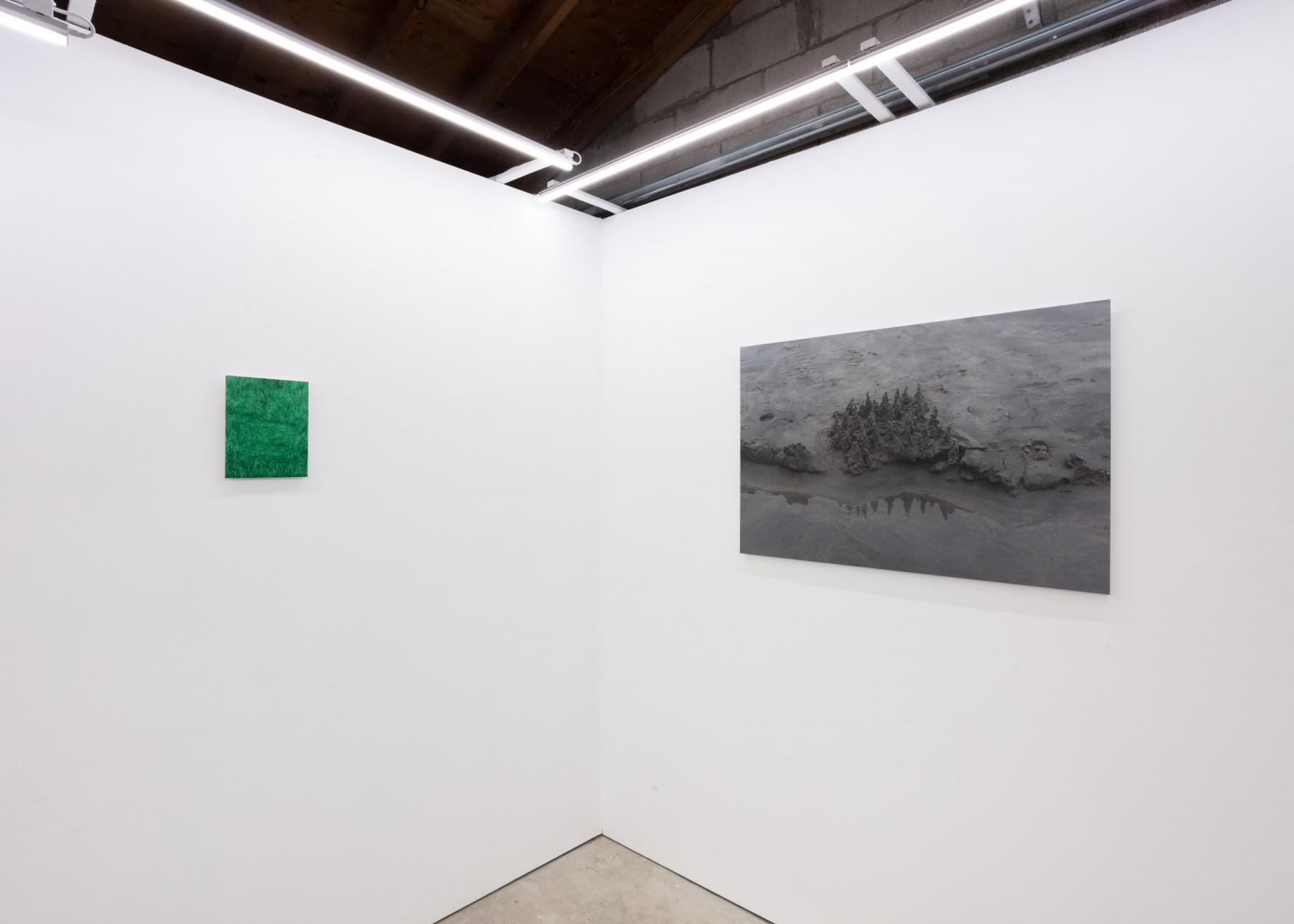
Grass (2022) and Little Saga (2023). Photograph by Laura Findlay. Courtesy of Joys Gallery.
In a laneway garage tucked behind the junction of Lansdowne and Dupont in Toronto, Ontario, Joys Gallery exhibited Maja Klaassens' most recent solo show, The view is total sea, curated by Joys’ founder and director Danica Pinteric. Visiting during the show’s run in spring of 2023, I heard a murmur, the work washed over me, gently reconfiguring my sensibilities; it carried me back to life’s mundanities with a new glimmer and fresh interest in simple profundities. Months later, I am still stuck on this work.
The act of seeing becomes as similarly naïve an act as holding onto the belief of the world as a bounded and objective phenomenon.
The view is total sea comes together in a clean, sparing use of sculpture, painting, and lens-based media works. An oyster shell on the gallery’s outer wall greets the passerby with a diffused, electromagnetic glow. In through Joys’ arched entryway, a rounded metal faucet drips a single plastic water droplet. On the three surrounding walls hang the exhibit's two-dimensional works: a photograph of a sandcastle in its architectural prime, an oil painting of grass in deep shades of green, and a photograph of a soda can, the image set beneath a layer of glass straws. Towards the back wall of the space, a series of pebbles in a cylindrical resin casing are camouflaged where they lie on the cement of the gallery’s floor. From behind the arched doorway on the gallery’s back wall come the rhythmic sounds of wind and waves. They emanate from a single-channel video of found ocean footage with narrative captioning. A polymer clay rose thorn of less than an inch juts out from beside this door frame, around knee-height. The cool metal of the Bauhaus-style faucet and the rounded glass silhouettes of the reusable straws are in clever conflation with the organic contour of the oyster shell and baroque river-stones. The work grinds the roughness of the organic world into something of a picture.
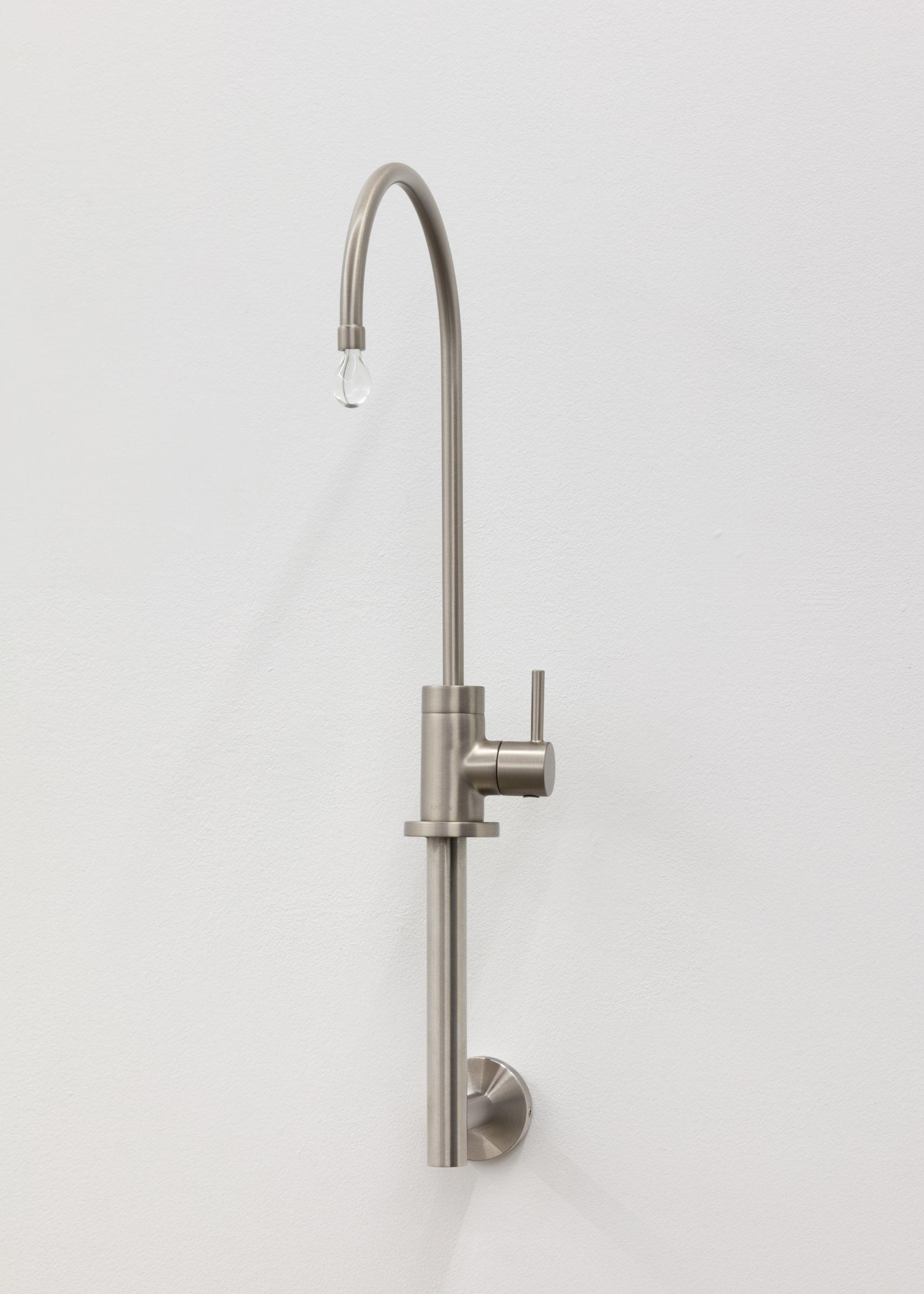
The Sea, the Sea (2023). Photograph by Laura Findlay. Courtesy of Joys Gallery.
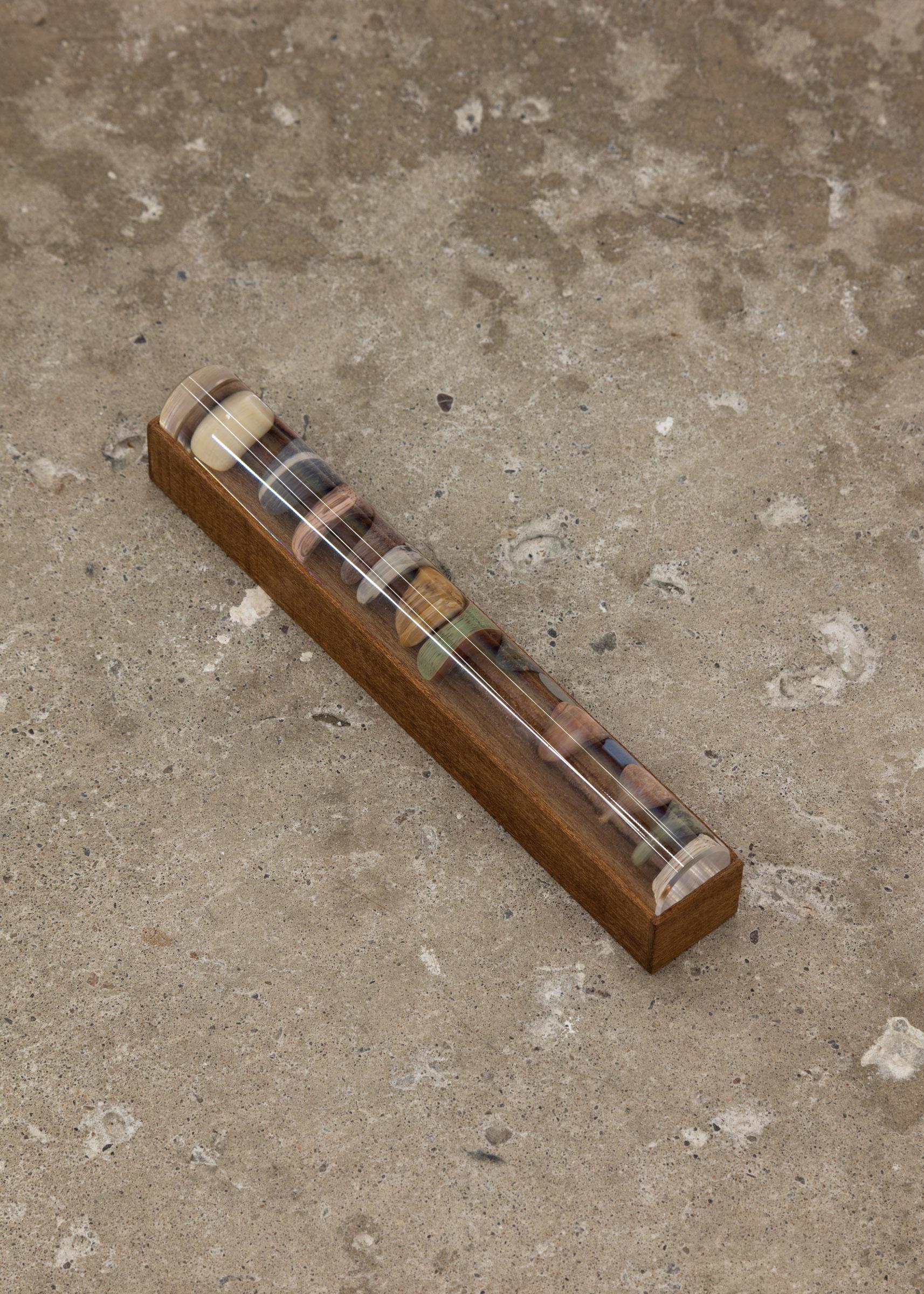
Pebble Stack (2020). Photograph by Laura Findlay. Courtesy of Joys Gallery.
Klaassens seems to be reimagining a hyper-reality with smooth, metallic edges, though substantiated—fleshed out—with ordinary, organic objects. In such material contradictions, the once reliable divisions between nature objects and culture objects disintegrate. We live in an era captivated and defined by widespread collapse—both human-object, and environmental—that contemporary ecological theorist Timothy Morton deems “end-times.” The view is total sea seems to meditate on ways of interacting with, theorizing, and narrativizing human-object interaction in the end-times era of floundering bisections and merging of once diametric opposites. And this is the immediate relevance of Klaassens' work: it helps us consider aesthetic responses to our ecological condition, with its synthesis of organic and synthetic material vaguely reminiscent of posthuman aesthetics, and its sustained consideration of water as primary resource of study. In each intimate detail of this exhibition, I felt that I was receiving a grammar lesson on the visual language of end-times, showing us how to frame and view—how to ultimately deal with—our immediate, discordant, material existence.
There is a hushed declaration nestled within the syntax of the exhibit's title: The view is total sea. When uttered aloud, this title positions seeing as a vastness that constructs the illusion of totality through a slippage of language where “sea” and “see” are interchangeable homophones. Potentially a malapropism on my part, but nonetheless provocative. I imagine the artist gesturing towards the work or maybe the ocean with a wry and existential proposition, “the view is total… see?” Through such a linguistic blur, anything one might glimpse in a single moment becomes the basis for one’s entire reality. Though we know our view is not—can never be—total. The act of seeing becomes as similarly naïve an act as holding onto the belief of the world as a bounded and objective phenomenon. Still, it is easy to misinterpret what we observe to be something of totality, in that moment, and for a second; stripped naked, cleansed of nuance.
If the view is total panoramic sea—determined by horizon lines, waves, dorsal fins, iceberg tips, and other protrusions recurring in the work—we, as the audience, remain privy only to its surface. Below the surface, things go partially or wholly unseen. These complications of seeing expand what it means to be an audience. Take Clementina, for example, a sculpture where we observe a photograph of a discarded can of Italian soda on the beach through a slatted venetian blind of glass straws. Slices of the image are obscured. And further too in Thorn—a series of miniscule polymer clay sculptures in the shape of disembodied rose thorns. A shape that Danica Pinteric points out to be also that of a dorsal fin or the cusp of a wave—formally and figuratively representative of the “tip of the iceberg.” In these subtle, recurrent obfuscations, this collection of work underscores that the view is not total, not even half complete, and the parts that we see, breaking the surface of the water, come as “a sliver or a fragment removed from the greater whole”. 1
Klaassens’ intentional collection of objects, images and moments make the exhibit itself not unlike an archive of sorts—moments are re and de-contextualized and then frozen in time, in support of a new narrative.
Speaking generally to the way we experience complex phenomena, which we can often only see/touch/understand in fragments removed from a greater whole, this exhibit taps into an interesting complication—that even simple objects are experienced as hyper-objects, loaded with history, mythology, and ideals, and metabolized only if consumed in fragmentary bites. Perhaps it is through the act of looking for something complete that we notice that the post-world in Klaassens' work gestures towards impressions, missing things, and incomplete realities. Things that linger but are not wholly there, traces of the total, and presence in absence become clearer motifs in works such as Clementina and Thorn, the longer we look.
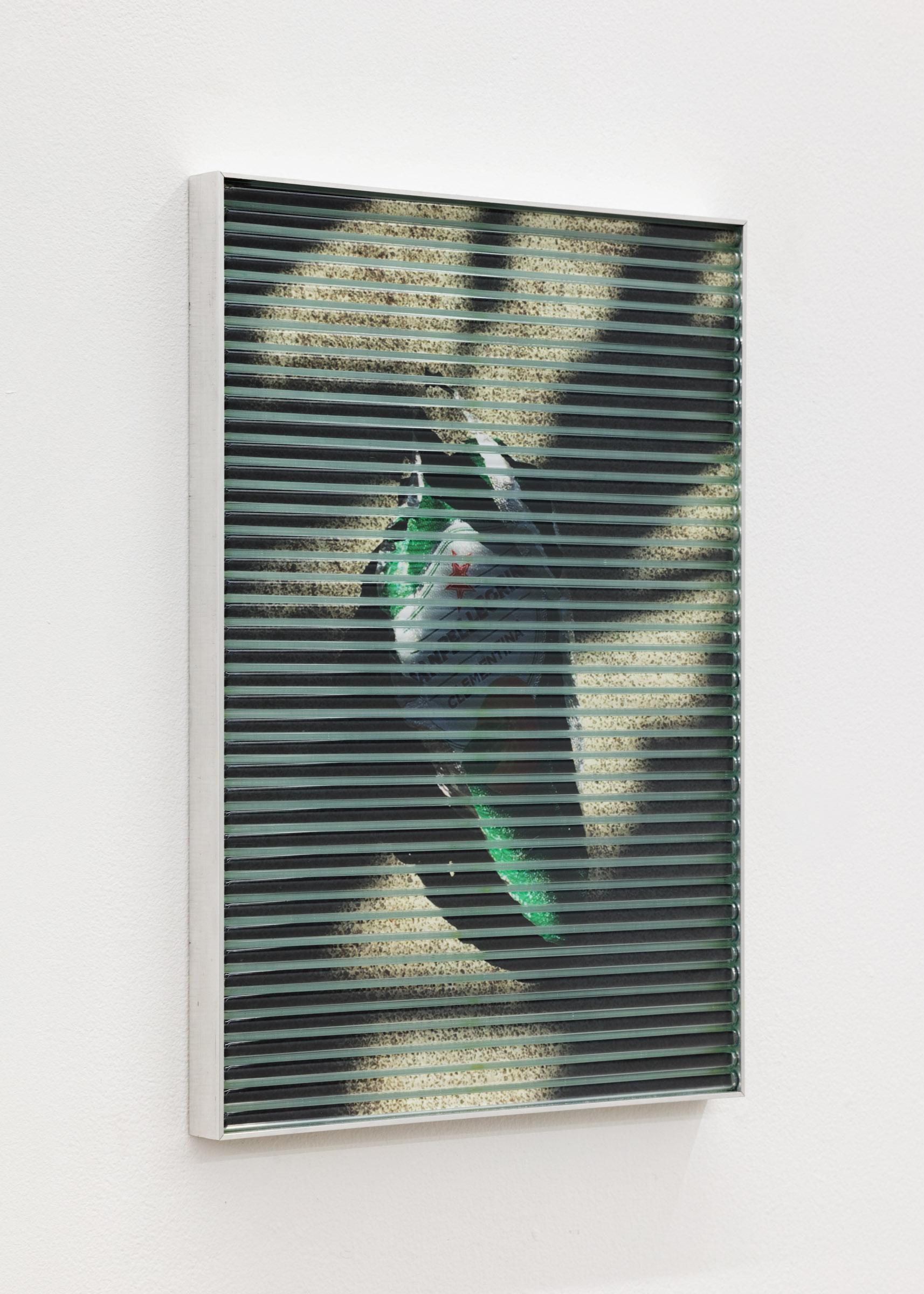
Clementina (2022). Photograph by Laura Findlay. Courtesy of Joys Gallery.
Presenting the viewer with a sea of green, the painting Grass becomes an emblem of totality, where its blades extend to all four edges of the work, consuming the canvas entirely. This painting makes the vastness of the sea similar to the compact but endless “sea” of grass blades that make up the sod of a football field or a suburban lawn. The pelagic rise and fall of the blades reminds me of the rippling of swell waves cascading across the ocean's living surface. Like both water and sand—two other material touchstones of the exhibit—grass is also rarely considered on a single plane. We see it not as a series of many individual plants, but as an organism—a hyper-object, a mass amalgamation. Monocultures at large (think wheat fields; cornfields; clearcut pine forests) articulate well this tautological “copy and paste” formalism that gives an object, idea, or view the glinting illusion of totality.
My eye is ultimately drawn towards two areas of matted-down grass near the center of the painting. They reveal the vestigial imprint of a fleeting moment. Perhaps left by an animal, likely by a human if we consider the variety of grass depicted—Kentucky bluegrass—originally from Europe but arriving on North American soils through colonial agriculture and Columbian exchange. So, I imagine the grass to be of a soccer field, a lawn, a park, or another cultivated area of land. These two patches of matted grass represent a trace of something human—a human impact, sure, an ecological footprint. But Grass also works alongside the provocations of Thorn to show (through absence) that what we see is not, can never be, something of complete totality.
Monocropping—as seen in the microcosm of lawn care, but also on a global scale of resource extraction—is indeed a nauseating visual: it renders clear the act of scraping off the surface of the world, removing a dynamic ecosystem, and curating it to a particular aesthetic proclivity. Within Klaassens’ work, I see these two matted areas of grass as traces of this destruction. Like ecological footprints, the impacts of these two deflations are not immediately obvious but become so in the search for orientation—a horizon line from which to position oneself in the examination of this painting—landing instead only ever upon a subtle shift in topographic elevation; a matted-down impression. Even as I look away, this impression lingers. A ruddied afterimage pulsating in my retina—an afterthought developing in its wake. Grass leaves me curious about the relationships between creative practices, and environmentally extractive processes. In the aesthetic cultivation of both art and land, are stories, objects, and realities not inevitably uprooted? Or worse, buried deep beneath a sweeping gesture that leaves only the faintest traces of their once-presence behind?
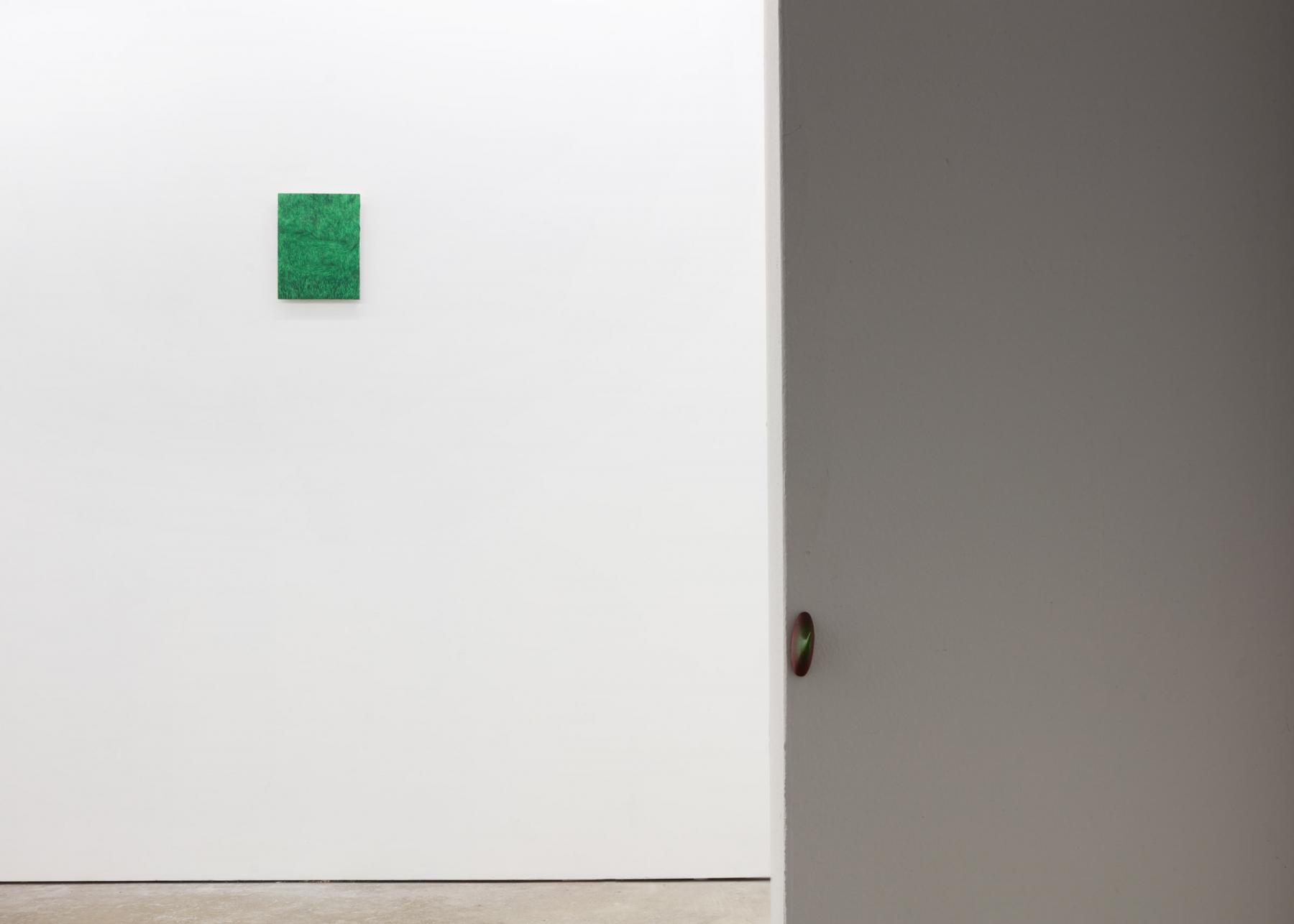
Grass (2022), and Thorn (2022). Photograph by Laura Findlay. Courtesy of Joys Gallery.
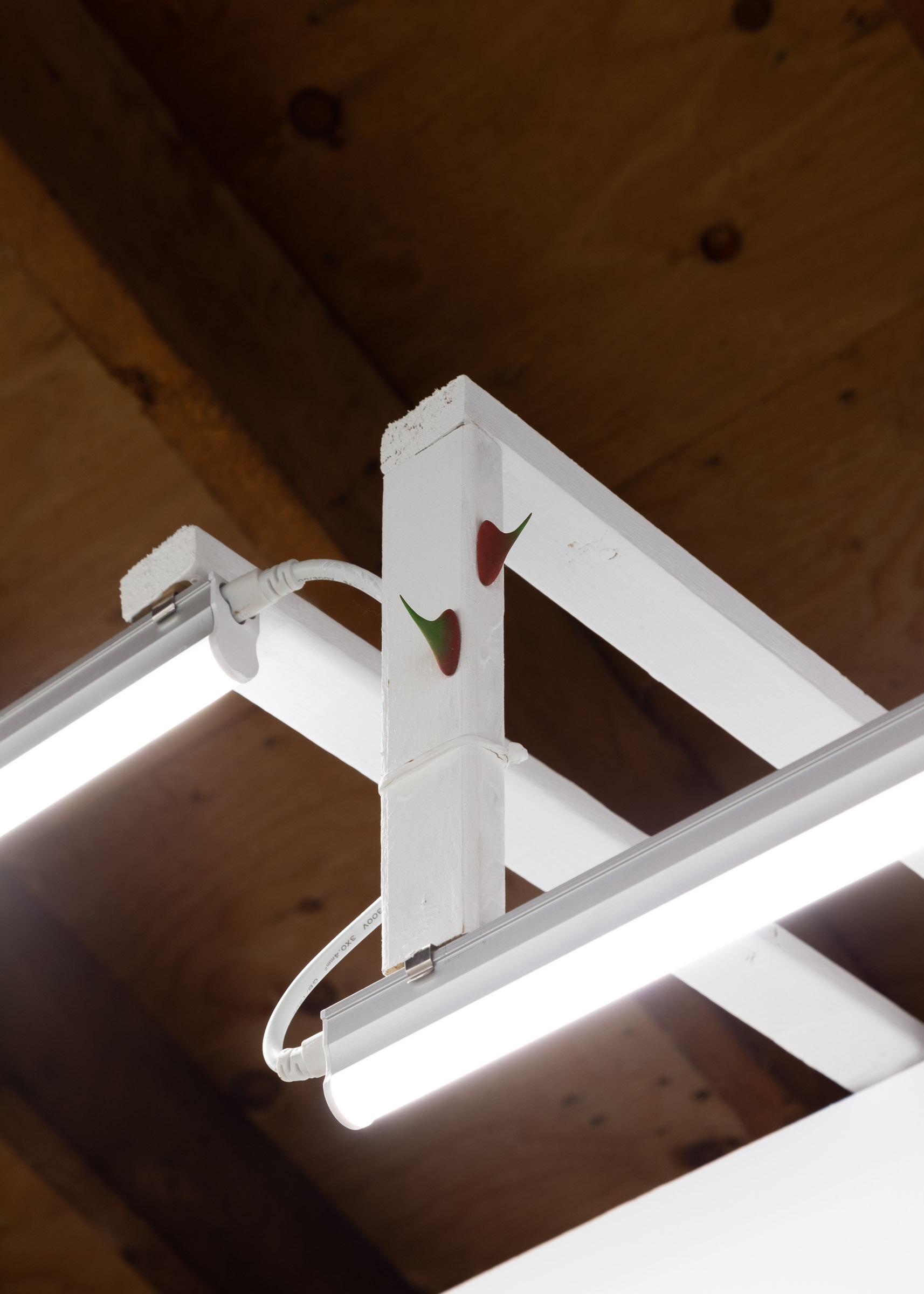
Thorn (2022) installation view. Photograph by Laura Findlay. Courtesy of Joys Gallery.
Klaassens’ intentional collection of objects, images and moments make the exhibit itself not unlike an archive of sorts—moments are re- and de-contextualized and then frozen in time, in support of a new narrative. An artist’s impulse at large to curate and create objects, images, and stories parallels the archivist’s impulse; a Western inclination to curate material reality in support of subjective narratives that collude in the fabrication of a universal, totalized world. Grass discloses, in an airy, diaphanous whisper, how even unremarkable aesthetic cultivations—re: the mundane practice of lawn care—can be acts of dismemberment. Such cultivations produce a particular reality, and in others, splintered fragments masquerade as their whole while the trimmings are swept aside in the process of curation.
Four months after its debut, Klaassens’ exhibit remains consistent material for my reflection. I turn the work over like a marble in my palm, prod at it—a pearl stuck in the mantle of an oyster, or a thorn lodged just below the skin. The work approaches the world in its current abstracted state, where cultivated and natural environments are entangled in both material and discursive realms. It treats the world, its objects, and the stories we tell ourselves about it all, as hyper-objects, evading any total perception through their mass distribution across time and space. Between sounds of crashing waves and glimpses of objects in half-life, Klaassens' work, in little more volume than a precious murmur, ultimately speaks to the phenomenon of seeing in fragments that appear to be whole, pointing us, as the audience, towards the failed absolute of universality.